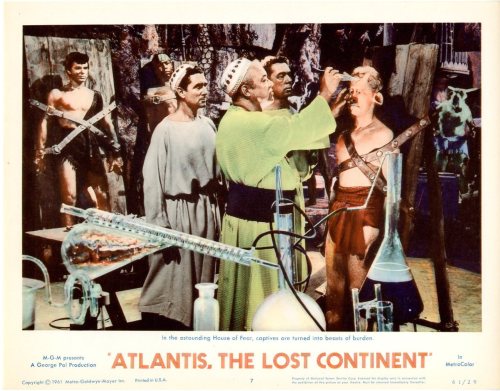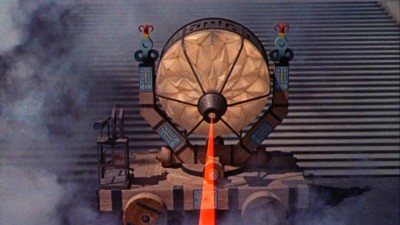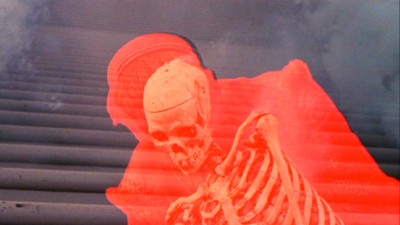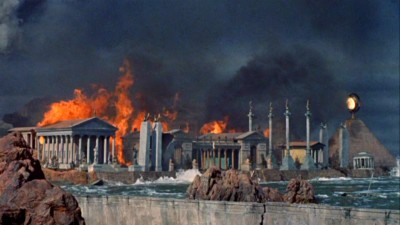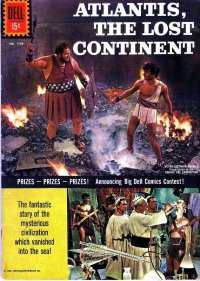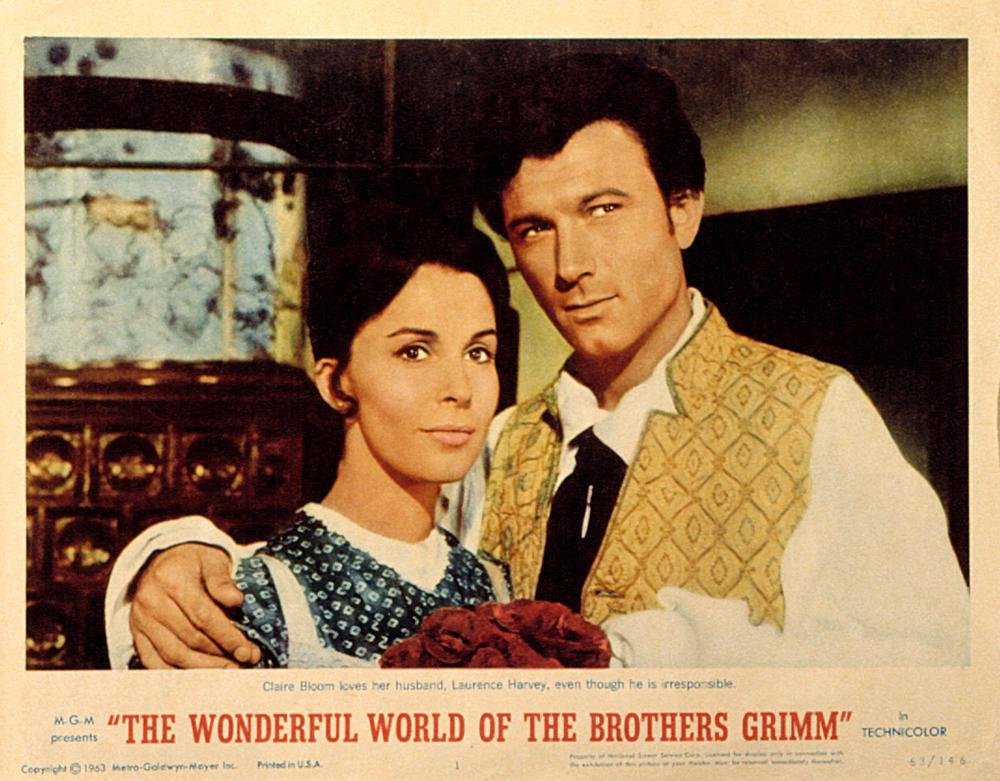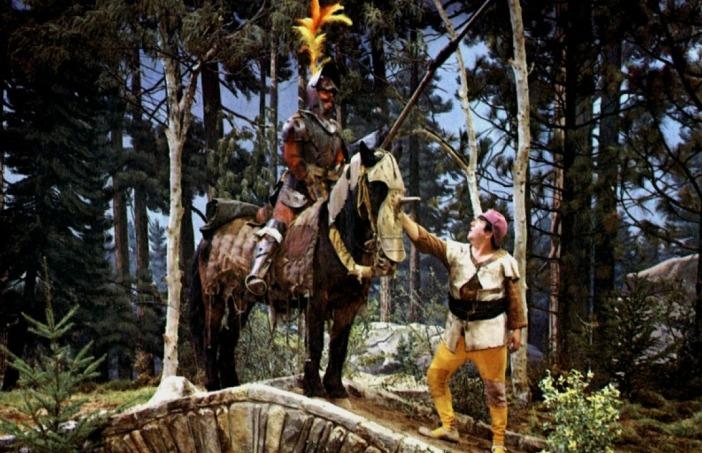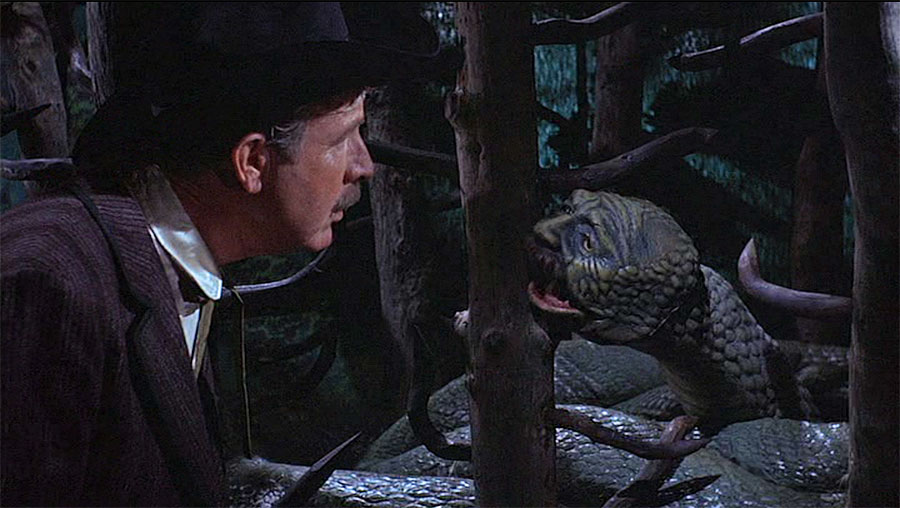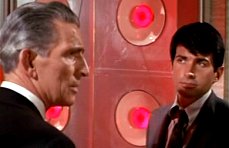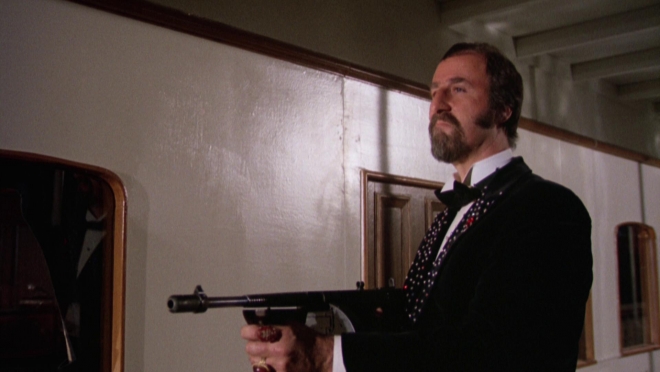I would really be shocked if any of my readers didn't know the name John Wayne. If you don't, or want to know him better. There are five links at the end of the article that give my reader a good feel for the actor.
However, most of my same readers do not know who William Augustus "Wild Bill" Wellman was and so let me introduce you to him. For those who might want a more detailed and loving look at the man after reading this article. I recommend his son William Wellman, Jr's biography Wild Bill Wellman: Hollywood Rebel.
William Wellman was born on February 29, 1896. Having a birthday only every four years would keep a person a lot younger than he looks. For those of my readers into American History. On the day Bill Wellman was born. He became the Great-Great-Great Grandson of Francis Lewis of the state of New York. You'll find Grandfather Lewis' signature on a little thing called "The Declaration of Independence".
Moving forward to the First World War, before America finally entered it on April 6, 1917. Found 19 year old William Augustus Wellman, in 1915, joining the Norton-Harjes Ambulance Corps with other American's wanting to help defeat Germany. He didn't stay an Ambulance Driver long and later in 1915. become one of the first American's to join the French Foreign Legion as a combat pilot. He was part of the Lafayette Flying Corps. A general name for American pilots serving in the French Air Force and not the sub group "The Lafayette Escadrille".

Above Corporal William A. Wellman circa 1917 by the plane "Celia" named for his mother. The following picture is from the book he was asked to write. The book's purpose was to get young American's to join the U.S. Army Air Corps.
Wellman after having shot down seven German aircraft was himself shot down in 1918 by German anti-aircraft guns and wounded. The action left him with a permanent limp and the French medically discharged the 22 year old. He returned to the United States to speak at War Bond Rally's in his French Uniform and in September 1918 the book was released.

The book "Wild Bill", the nickname he was given by his fellow pilots in France, wrote has a great title to attract young men:
"Go Get 'em!--The True Adventures Of An American Aviator Of The Lafayette Flying Corps--Who Was The Only Yankee Flyer Fighting---Boys Of The Rainbow Division In Lorraine"
I have read this work and it is available for free on line at:
https://books.google.com/books?id=A-7HAAAAMAAJ&printsec=frontcover&source=gbs_ge_summary_r&cad=0#v=onepage&q&f=false
I now move forward to "Hollywood, U.S.A."
William Wellman became friends with Douglas Fairbanks, Sr. He would use Fairbanks' polo field as a landing strip, when a game wasn't being played, for a WW1 airplane he owned and flew for fun. In 1919, through the help of the Silent Film Star, Wellman was cast as an extra in a feature film, but was fired for slapping the wife of director Raul Walsh. However, after that incident he started learning the craft of director on 11 forgotten motion pictures, Then came 1927 and "Wings".
Paramount wanted to make a motion picture based around the exploits of American World War One pilots. William A. Wellman got the director's job for one reason only. He had actually flown and fought in war and understood what the air battles should look like. After the movie was to start production Paramount made a surprise move, The screenplay was completely rewritten for actress Clara Bow the studio's most major star.
That change still did not stop the filming of realistic air battles by Wellman with fellow WW1 veteran flyers. The director also recreated the feel of battles between German and American ground troops. The film became the First Winner of the Best Picture Academy Award. "Wild Bill" was not nominated by the Academy for director.
I am not going to list of all the films William Wellman continued to direct until we reach the first of the three John Wayne starring vehicles I want to discuss, but want to highlight some of the pictures during that 27 year period.
In 1931 was the Pre-Production Code motion picture that made James Cagney a star "Public Enemy" co-starring Jean Harlow. This was a gangster picture that pushed the limits of censorship at the time. In 1934 Wallace Beery, Fay Wray and Leo Carrillo were seen in the first Hollywood film about Pancho Villa entitled "Viva Villa!", 1937 saw William Wellman at the helm of the original "A Star Is Born" starring Janet Gaynor and Fredric March.
Gary Cooper, Ray Milland and Robert Preston were brothers in Wellman's classic version of "Beau Geste" in 1939. Brian Donlevy was nominated for a Supporting Actor Oscar as the sadistic French Foreign Legion Sergeant. Ginger Rodgers was directed as "Roxie Hart" in 1942 This film which became the Broadway musical "Chicago" was followed in 1943 by a murder mystery written by Stripper Gypsy Rose Lee "Lady of Burlesque" starring Barbara Stanwyck. That same year would see the classic Western "The Ox-Bow Incident" starring Henry Fonda and Dana Andrews. The following year was a popular fictional biography "Buffalo Bill" starring Joel McCrea, Maureen O'Hara and Linda Darnell.
Returning to the realism of war and based upon the work of reporter/writer Ernie Pyle was 1945's "The Story of G.I. Joe". The picture made Robert Mitchum a star and co-starred Burgess Meredith as Pyle. Not to mislead my reader that William A. Wellman only directed dramas. "Magic Town" in 1947 was a comedy starring |James Stewart and Jane Wyman. The following year was another of those hard hitting Westerns "Yellow Sky" shot in a real Ghost Town. The film was about a group of bank robbers and starred Gregory Peck, Ann Baxter and Richard Widmark as his evil best. A different style of Western was 1951's "Across the Wide Missouri" starring Clark Gable and Ricardo Montalban. A story of Mountain men trapping fur, but up against a vengeful Blackfoot Chief. 1952's "My Man and I" was one of the first motion pictures to look at discrimination for Hispanic American's and starred Montalban and Shelly Winters.
In 1958 Wellman would make his last motion picture "Lafayette Escadrille". A movie that studio head Jack L. Warner changed from William Wellman's tribute to the men he flew with during WW1 and one in particular. Instead of the directors choice for the lead Paul Neuman. Jack L. Warner chose teen heart throb Tab Hunter while getting the budget to less than an average "B" motion picture. William A. Wellman requested his name be removed as producer, because this wasn't his film.
ISLAND IN THE SKY (1953)
His name was Ernest Kellogg Gann and before World War 2 flew Douglas DC-2 and DC-3 aircraft as a cargo transport pilot. During the war he flew the military version of the new DC-4 as part of the Air Transport Command. After the war Gann returned to the life of a Civilian pilot and became a major author of aviation based novels.
That change still did not stop the filming of realistic air battles by Wellman with fellow WW1 veteran flyers. The director also recreated the feel of battles between German and American ground troops. The film became the First Winner of the Best Picture Academy Award. "Wild Bill" was not nominated by the Academy for director.
I am not going to list of all the films William Wellman continued to direct until we reach the first of the three John Wayne starring vehicles I want to discuss, but want to highlight some of the pictures during that 27 year period.
In 1931 was the Pre-Production Code motion picture that made James Cagney a star "Public Enemy" co-starring Jean Harlow. This was a gangster picture that pushed the limits of censorship at the time. In 1934 Wallace Beery, Fay Wray and Leo Carrillo were seen in the first Hollywood film about Pancho Villa entitled "Viva Villa!", 1937 saw William Wellman at the helm of the original "A Star Is Born" starring Janet Gaynor and Fredric March.
Gary Cooper, Ray Milland and Robert Preston were brothers in Wellman's classic version of "Beau Geste" in 1939. Brian Donlevy was nominated for a Supporting Actor Oscar as the sadistic French Foreign Legion Sergeant. Ginger Rodgers was directed as "Roxie Hart" in 1942 This film which became the Broadway musical "Chicago" was followed in 1943 by a murder mystery written by Stripper Gypsy Rose Lee "Lady of Burlesque" starring Barbara Stanwyck. That same year would see the classic Western "The Ox-Bow Incident" starring Henry Fonda and Dana Andrews. The following year was a popular fictional biography "Buffalo Bill" starring Joel McCrea, Maureen O'Hara and Linda Darnell.
Returning to the realism of war and based upon the work of reporter/writer Ernie Pyle was 1945's "The Story of G.I. Joe". The picture made Robert Mitchum a star and co-starred Burgess Meredith as Pyle. Not to mislead my reader that William A. Wellman only directed dramas. "Magic Town" in 1947 was a comedy starring |James Stewart and Jane Wyman. The following year was another of those hard hitting Westerns "Yellow Sky" shot in a real Ghost Town. The film was about a group of bank robbers and starred Gregory Peck, Ann Baxter and Richard Widmark as his evil best. A different style of Western was 1951's "Across the Wide Missouri" starring Clark Gable and Ricardo Montalban. A story of Mountain men trapping fur, but up against a vengeful Blackfoot Chief. 1952's "My Man and I" was one of the first motion pictures to look at discrimination for Hispanic American's and starred Montalban and Shelly Winters.
In 1958 Wellman would make his last motion picture "Lafayette Escadrille". A movie that studio head Jack L. Warner changed from William Wellman's tribute to the men he flew with during WW1 and one in particular. Instead of the directors choice for the lead Paul Neuman. Jack L. Warner chose teen heart throb Tab Hunter while getting the budget to less than an average "B" motion picture. William A. Wellman requested his name be removed as producer, because this wasn't his film.
ISLAND IN THE SKY (1953)
His name was Ernest Kellogg Gann and before World War 2 flew Douglas DC-2 and DC-3 aircraft as a cargo transport pilot. During the war he flew the military version of the new DC-4 as part of the Air Transport Command. After the war Gann returned to the life of a Civilian pilot and became a major author of aviation based novels.
Ernest K . Gann had first become an author in 1940 with the non-fiction work "Sky Roads". Two more non-fiction books were published in 1941 and 1943. These were followed by his first novel, 1944's "Island in the Sky", the source of the screenplay the author wrote for the 1953 motion picture.
"Island in the Sky" is based upon a real incident that happened on February 3, 1943 to a plane in the Air Transport Command that went down in Canada. The downed aircraft was a DC-47, the military version of the DC-3, and the author had been a back up pilot on the rescue mission.
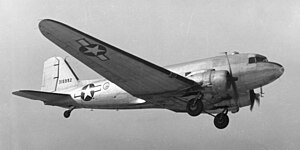
Initially Robert Stillman Productions purchased the rights to Ernest K. Gann's novel in 1950 with a plan to use actor Richard Widmark in the lead. For some reason this fell through and in 1952 the production team of John Wayne and Robert Fellows acquired the rights from Stillman. The finished picture had its premier on September 3, 1953 in Los Angeles.


Looking back today at the year 1943, when the original survival event occurred. It may be hard for my reader to visualize that any plane forced down by weather conditions in Canada, near the Quebec-Labrador border, would become a major problem to locate. However, in 1943, that area of Canada was still uncharted, pitting the odds against the crew's survival.
As in 1943, the novel and screenplay by Ernest K, Gann has the crew of the "Corsar" flying "The Northern Route" to England with much needed supplies. This avoided most German aircraft, but when the weather conditions worsen. It forces a landing on a frozen lake and makes the plane inoperable even when the weather clears.
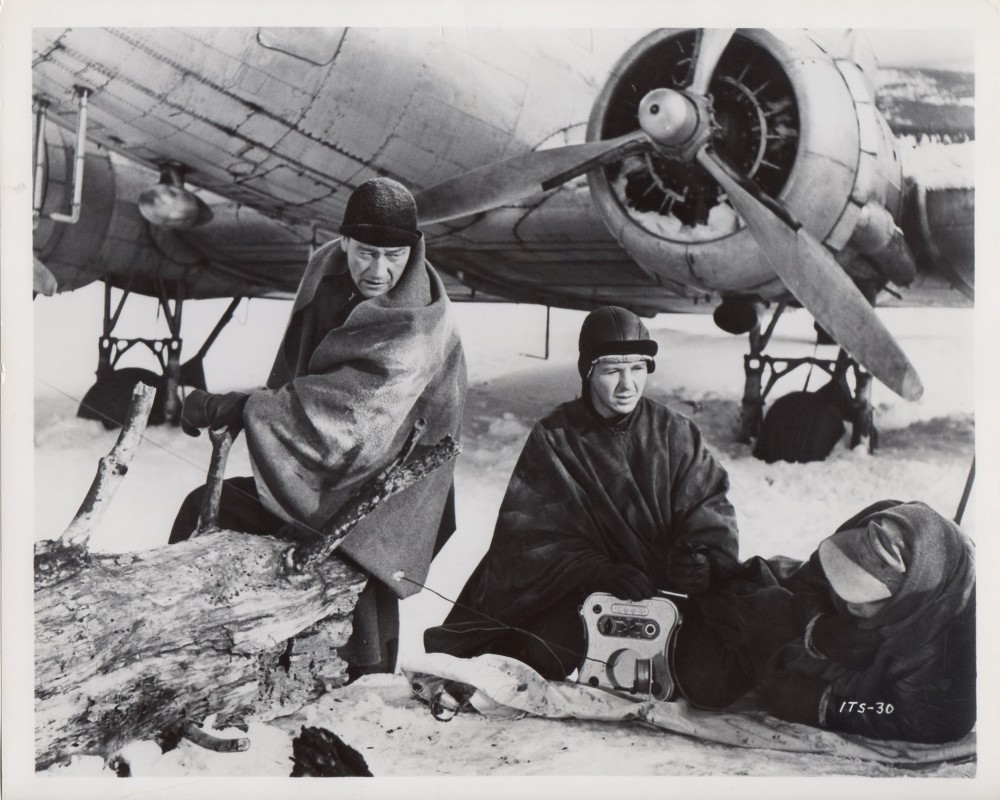

The above two photos and the two below give my reader, unfamiliar with the picture, the isolation of the landscape the plane was forced down in. The temperatures at the time dropping at night to 70 below zero and taking the strength out of the crewmen. As their food supply starts running low.

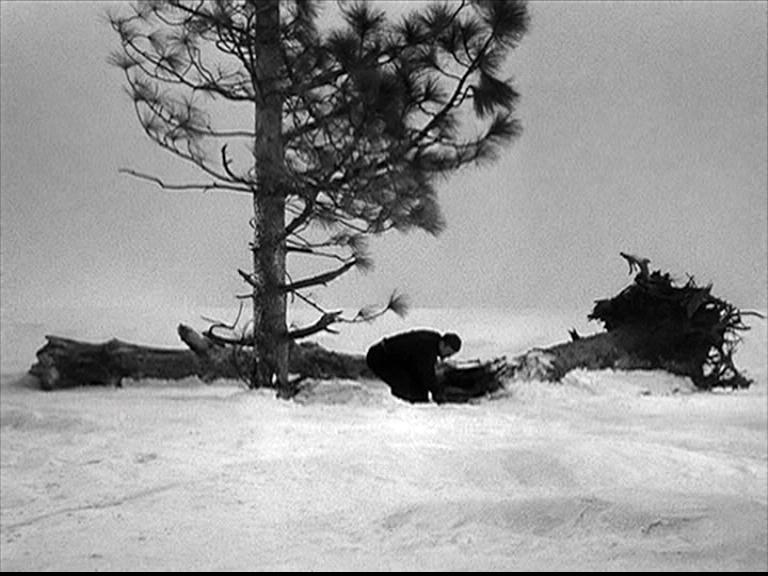
The motion picture was filmed in California in the Sierra Nevada's substituting for Quebec. The Doner Laker area was used for filming near Truckee, Yes, this is the lake associated with the Doner Party that reverted to cannibalism to survive the winter. The National Forest Service cut down trees to open up the area for incoming and out going aircraft required to get the cast, crew, equipment and supplies in. For comparison with the four stills above of the sparse look of the area. The following photograph was taken from Doner Pass overlooking how the lake area normally looked before production of "Island in the Sky" began and would eventually return too.

There are some interesting names is this 41 role ensemble cast besides John Wayne. I am not going to mention all of them, but give some interesting information on 15.
In following still shows James Arness as rescue pilot "MacMullen" and his radio operator "Swanson" portrayed by Daryl Hickman.

James Arness will always be associated with two roles. 1951's "The Thing from Another World" were he was the title character, and "Marshall Matt Dillon" on television's "Gunsmoke" a role John Wayne got for his friend. Arness appeared with Wayne in 1953's 3-D western "Hondo" and 1952's "Big Jim McLain". In which he portrayed John Wayne's partner as investigators for The House Committee on Un-American Activities. The picture reflected both actor's politics. A subject I mention in one of my links at the end of this article.
In 1954 James Arness co-starred in the classic science fiction motion picture "THEM!".

Actress Ann Doran, one of the three actresses in "Island in the Sky", portrayed the child psychologist in the same picture. She is seen behind the little girl in the chair below.

Daryl Hickman started as a child actor in 1937 and appeared in many motion pictures through the 1940's. In many classic film's he portrayed the younger version of the film's main actor. Example of Hickman's work included playing Fred MacMurray's "Captain Eddie Rickenbacker" as a boy in the Hollywood Biography of the aviator and in the same capacity "Ira Gershwin" in the Hollywood Biography of "George Gershwin", In 1959 Daryl guest starred on his brother Dwayne's television series "The Many Lives of Dobie Gillis" as of course "Dobie's Brother Davey". He also appeared in William Castle's "The Tingler" and was a voice actor on the original "Johnny Quest" cartoon series.
Playing Ann Doran's husband pilot "Willie Moon" was Andy Devine.

Above directly behind Andy Devine are Lloyd Nolan and Walter Abel.
Devine with his distinctive voice had been acting in character and support roles since 1926. In 1937 he had a major role in William Wellman's "A Star Is Born", In 1939 Andy Devine portrayed "Buck" in John Ford's classic western "Stagecoach", The film that made John Wayne a "Star". Two years after "Island in the Sky" Devine was hosting his own children's television program "Andy's Gang" and appearing as Guy Madison's sidekick "Jiggles" on television's popular "The Adventures of Wild Bill Hickok".
Actor Lloyd Nolan was "Captain Shultz" one of the rescue pilots. Nolan in his career portrayed no nonsense characters such as "Michael Shayne Private Detective" in seven motion pictures and private detective "Martin Kane" in a 1951 television series of that name. In 1964 Lloyd Nolan would co-star in Samuel Bronson's "Circus World" starring Wayne.
Walter Abel was "Colonel Fuller" in charge of the rescue mission. Abel was a solid actor in a career starting in 1918. In 1935 he was "d'Artagnan" in "The Three Musketeers", the District Attorney in Fritz Lang's classic "Fury" starring Spencer Tracy, had a role in Lloyd Nolan's first"Michael Shayne" movie, appeared with James Cagney in another classic about the OSS tracking down Nazi spies "13 Rue Madeleine". After "Island in the Sky" Abel appeared in both the Kirk Douglas western "The Indian Fighter" and the Elizabeth Taylor, Montgomery Clift civil war epic "Raintree County" among many television appearances.
Starting out with walk-on's in two of the "Dick Tracy" movies and appearing in the major motion pictures "David and Bathsheba" and "The Desert Fox" was actor Sean McClory. McClory portrayed "Dooley's co-pilot Frank Lovat". McClory using the last name of McGlory previously appeared with Wayne in John Ford's 1952 feature "The Quiet Man". Sean McClory would join James Arness and Ann Doran in 1954's "THEM!" as "Major Kibbee".
It's hard to recognize Harry Carey, Jr. as "Moon's co-pilot Ralph Hunt", left, in the photo that follows, but it is easier to recognize "B" Cowboy actor Bob Steele, standing, as "Wilson" one of Andy Devine's crew.

Harry Carey, Jr., son of Wayne's idol cowboy actor Harry Carey, started in motion pictures in a 1921 western "Desperate Trails" directed by John Ford and starring his father. Of course he was only a baby at the time and has no recollection of his role. In 1948 Carey, Jr. appeared in Howard Hawks' "Red River" starring John Wayne and in John Ford's "3 Godfathers" with Wayne and Pedro Armendariz. 1949 saw him as "Second Lieutenant Ross Pennell" in Ford's "She Wore a Yellow Ribbon". In 1950 he co-starred with another Ford company member Ben Johnson in "Wagon Master".
"Island in the Sky" would be his 5th feature with John Wayne and the actor would appear in Ford's classic "The Searchers".Anyone my age should remember Harry Carey, Jr. as "The Triple R" Ranch Head Counselor in the "Spin and Marty" series on the original "Mickey Mouse Club".
Bob Steele has over 242 film credits to his career, if you count the multiple episodes of some television shows such as 1967's "F-Troop". He began his career in 1920 and ended it in 1974. Bob Steel was one of the most popular 1930's "B" Cowboys and this lasted through the 1940's as he competed with such stars as Roy Rodgers, Gene Autry and William Boyd.
Both Bob Steele and John Wayne were part of the very popular Republic Pictures Franchise "The Three Mesquiteers" started in 1936, but at different times. They both took over roles for other actors. Wayne in the role of "Stony Burke", 1938 into 1939, and Steele in the role of "Tuscon Smith". From 1940 until the end of the series in 1943. The two would appear together in "Rio Bravo" and "Rio Lobo".
A long time friend of John Wayne's was actor Paul Fix playing "Wally Miller". Anyone familiar with the television series "The Rifleman" either when it came out, or plays on the Western Channel will recognize Paul Fix as "Marshall Micah Torrance". His acting career started in 1925 and he was known for playing western bad guys, or gangster's as in Howard Hawks' 1932 "Scarface". Fix would become a regular of both the John Ford and Howard Hawks stock companies. However, this friend of Harry Carey, Sr. became friends with John Wayne around 1930. When the name had just been created. What Wayne couldn't really do was act and Fix took the job of teaching the youngster, by six years, how too including what became the famous "John Wayne Walk". Paul Fix would appear in 27 of the actor's movies including "Island in the Sky" and the two I will be looking at next.
With the following four actors I just want to make some brief comments. I'll start with Regis Toomey as "Sergeant Harper".
If the face seems familiar it should be to true film lovers. Among his 270 film roles were King Vidor's 1940 "Northwest Passage" starring Spencer Tracy and Robert Young, Raul Walsh's "They Died with Their Boots On" starring Errol Flynn and Olivia DeHavilland, Alfred Hitchcock's 1945 "Spellbound" starring Ingrid Bergman and Gregory Peck, Howard Hawks 1946 "The Big Sleep" starring Humphrey Bogart and Lauren Bacall, Merian C. Cooper and John Ford's 1949 "Mighty Joe Young"and many guest appearances on popular 1960's to 1980's television shows.
This actor portrayed "Sonny Harper, Schultz's co-pilot". My readers might not recognize the following face now:
He's Carl Switzer, "Alfalfa" of the "Our Gang Comedies". At the time of "Island in the Sky" Switzer was appearing on television shows and with his wife had started training and breeding hunting dogs. His clients included Roy Rodgers, Jimmy Stewart and Henry Fonda and this became is main income.
Playing a role that is just described as "Fitch's co-pilot" was Fess Parker. The following year Parker also would appear in the science fiction classic "THEM". In his one scene shown below with James Arness and Joan Weldon. Fess Parker in his best Fort Worth, Texas born accent explains why he crashed his plane on a highway. He claimed to have been chased by "Flying Saucers" shaped like "Giant Ants". A small sequence that was critical to his future career and wealth.
In a special screening of the motion picture for science fiction fan Walt Disney by Jack L. Warner. Disney had this sequence re-run several times and then told Warner he had found his "Davy Crockett". The rest is history.
Playing the role of "Gainer" was "Touch" Connors. The nickname "Touch" came from High School Basketball and with that name the actor appeared 32 times in either motion pictures or on television from 1952 until mid-1957. When he became "Michael Connors" and then eventually just "Mike Connors" for the 194 episodes of the "Mannix" television program starting in 1967. His films as "Touch" included such 1950's science fiction/horror movies as "Swamp Women" and "The Day the World Ended" both for Roger Corman. Along with a Corman western "Five Guns West", the musical "Shake, Rattle & Rock" and he was a Hebrew slave, lost among the giant cast, in Cecil B. DeMille's 1956 'The Ten Commandments".
"Island in the Sky" was given a budget of $967,000 and made a profit of $2.75 million 1953 dollars. Almost 3 times the budget. Critics also noted that the performance William Wellman was able to get from John Wayne was against type as a "Cowboy" and excellent. John Wayne was always attempting to change his perceived "Cowboy" image and show he really could act. "Island in the Sky" proved that point, but the critics and public would not let him change. One of my links at the end of this article deals with Wayne's attempts at changing that perception.
THE HIGH AND THE MIGHTY (1954)

Directly opposite of how the Warner Brother's publicity department promoted William Wellman and John Wayne's "Island in the Sky" was their promotion of "The High and the Mighty". There is a "little white lie" on the poster, or maybe a fact just stretched a bit. The novel came out during 1953 and the motion picture was released on July 3, 1954. So technically it had not been two full years since the novel was published.
The story of how the main actors and actresses portraying the passengers on the flight were cast as shown on the above poster. Is part of a circle of obstacles that had to be overcome in reaching the first day of filming on the picture.
Initially while preparing for the release of "Island in the Sky" and talking with Ernest K. Gann. William A. Wellman discovered the author was finishing another aviation novel. Wellman told John Wayne and Robert Fellows about this unpublished work and it's possibilities on the movie screen. John Wayne made a decision, without even reading Gann's work, of purchasing the screen rights to "The High and the Mighty". The cost to Wayne-Fellows Productions was $55,000 cash to the author and once more screenplay writer and 10 percent of the profits. To get Wellman back on board as director took another 30 percent of the Wayne-Fellows profits, but even then not without an expressed concern by the director.
One of the conditions to Wellman for his 30 percent was that the motion picture be filmed in the new process CinemaScope. Other than he was into new movie concepts. Why Wayne wanted the process really didn't make financial sense at the time. The financial concern to distributors in 1953/1954 was that very few theaters in the United States, let alone the world, were equipped to show widescreen. They needed to have a specially constructed large screen at the theater owners expense. This had been part of the same problem in 1930 with the first movie the name John Wayne appeared upon "The Big Trail". My article on that film and the 70 mm Grandeur process is at the end of this article.
William Wellman's told Wayne and Fellows that he had an objection to filming "The High and the Mighty" in CinemaScope. He stated that the new cameras used for the process were very heavy and hard to handle by the crew. Adding that in the first CinemaScope release "The Robe", December 1953, and the few films that followed. The camera equipment caused extra re-shoots on many sequences adding to the production costs,
However, Wellman finally gave in for that 30 % and because of one other thing that Actor/Producer Wayne wasn't considering from a strictly technical point. The largest portion of the motion picture was being filmed in the confined spaces of the passenger cabin and flight deck of a Douglas DC-4. Therefore, the CinemaScope process could easily have been a normal and less costly 35 mm shoot. As the CinemaScope camera almost becomes stationary and acts as if it is the smaller 35 mm standard, at the time, camera.

"The High and the Might" was the first "All Star" disaster motion picture, but ended up using "B" actors and actresses not "A" List.
Casting had been the next problem faced on the production, because major Hollywood players didn't want to be part in the picture. Ernest K. Gann's novel was an ensemble story without one, or two main roles of any substance.
A few of the actresses being offered roles in the Wayne-Fellows production were Barbara Stanwyck, who had appeared in some Wellman directed pictures, Dorothy McGuire, Ginger Rodgers, Ida Lupino and Joan Crawford. All turned down the roles as below them.
The role of "First Officer Dan Roman" was offered to Spencer Tracy, but he turned the part down because he claimed the script was "lousy", It's believed the real reason was some of Ttacy's friends convinced the actor that the role, as with the actresses, was beneath him. Warner Brother's the distributor threatened to pull their funding unless another major actor could be found for the "Roman" role. "Wild Bill" spoke to Wayne about doing the part and finally convinced him to save the picture.

According to Assistant Director Andrew V. McLagen the son of John Wayne's friend British actor Victor McLagen. As referenced in Michael Munn's 2005 biography: "John Wayne: the Man Behind the Myth". Wayne hated his performance in the picture. According to Munn, McLagen said Wayne objected to the role, because the script didn't have a love story for him. The reply to his objection was that the script had the greatest love story ever written. Referring to "Roman's love of aviation and flying". The audiences also disagreed with John Wayne's assessment of his acting.
Dimitri Tiomkin's haunting theme song is used for the Wayne character. Whose nickname is "Whistling Dan Roman" and there are a couple of scenes of Roman whistling the theme song, or maybe not. Later!
The whistling added to the low keyed power of the character derived from a flashback sequence showing the crash of a plane Roman was piloting that killed his wife and son, becoming the reason he was reduced to co-pilot status.

For the major passenger roles the Hollywood "A" List had turned down. As shown on the above poster William A. Wellman cast some of Hollywood's solid "B" actors and actresses of the time. Some of this group had been major actors in the past, or known for strong character roles.
One of those past major actresses, but still popular was Larrine Day as "Lydia Rice". Day had co-starred with Joel McCrea in Alfred Hitchcock's 1940 "Foreign Correspondent" and with Cary Grant in 1943's "Mr. Lucky". She portrayed the character of "Nurse Mary Lamont" in seven of the very popular 1940's "Dr Kildare" movies with Lew Ayers. Day had also co-starred with John Wayne in 1947's "Tycoon" and followed it in 1948 opposite Kirk Douglas in "My Dear Secretary".
Portraying passenger "Ed Joseph" was actor/comedian and jazz musician Phil Harris. In 1967 Harris provided Walt Disney with the voice, included singing, of the bear "Baloo" in the animated "Jungle Book".
http://www.bewaretheblog.com/2017/06/robert-newton-is-long-john-silver_17.html
Robert Newton would co-star in Michael Todd's 1956 all star version of Jules Verne's "Around the World in 80 Days" as "Inspector Fix".
Passenger "Ken Childs" was portrayed by actor David Brian. Brian played many District Attorney type roles, but also was known for his villainous roles in Westerns and some gangster movies. The actor also become popular appearing in guest roles on 1950's and 1960's television programs. Some of those TV shows were the original "Star Trek","The Untouchables", "Honey West" and "The Girl From U.N.C.L.E." Between 1954 and 1955 Brian starred on the forgotten television show "Mr District Attorney".
I left one actor and two actresses out of order from the above poster for "The High and Might", because their stories are interesting.
John Wayne's name had top billing and was the major draw to the picture, but he was not the main character in the story. IF there is such a character then that is the role of the pilot and not the co-pilot. Initially the part of "Captain John Sullivan" was offered to an actor who flew his own small plane and was Wayne's friend Robert "Bob" Cummings. Wellman also liked Cummings and considered his knowledge of flying a plus, but another actor, not a pilot, was interviewed for the role.
Robert Stack's career had started in 1934 in the Shirley Temple feature "Bright Eyes" as, interesting enough, the man on the plane. He took a break from acting to serve in World War 2 as a Naval Gunnery Instructor. After the war Stack continued to appear in "B" motion pictures either in supporting, or starring roles. In 1952 he starred in the first commercial 3-D motion picture "Bwana Devil". That was remade in 1996 as "The Ghost and the Darkness".
A newspaper piece about Robert Stack in "The High and the Mighty" is below. This came out sometime after 1977 and described his role and the plot of the movie this way:
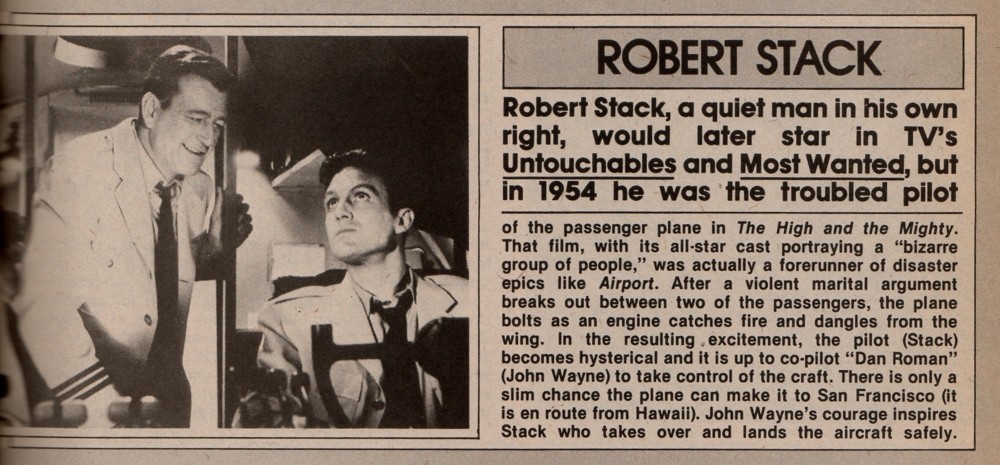
Twenty-six years later in the 1980 comedy classic "Airplane". Robert Stack would do a parody of "Captain John Sullivan" as "Captain Rex Kramer".
IF Warner Brothers had any fear that this movie would be a bomb with so many minor actors. When the Academy of Motion Pictures Arts and Sciences gave the picture six nominations for the 27th Annual Academy Awards it was alleviated. As had been the box office performance. The budget had been a large $1.47 million 1954 dollars. Equal in 2017, as of this writing, to $13,362,463 dollars and the pictures 1954 box office performance was $8.5 million over 6 times its final costs.
Among the 6 nominations "The High and the Mighty" received. Where two for Best Supporting Actress and William Wellman for Best Director. Wellman lost out to Elia Kazan for "On the Water Front".
One of the two Best Supporting Actress nominee's was Jan Sterling. She didn't win the Oscar, but Sterling won the Golden Globe in the same category
Jan Sterling's name may not be familiar to my readers, but this "B" Actress was as close to an "A" List Actress as they came. Prior to portraying passenger "Sally McKee". Sterling had appeared in several interesting films and roles. She portrayed the wife of a man trapped in a cave-in that an unscrupulous reporter, Kirk Douglas, turns into a major story, He convinces the contractor working on the rescue to drill from above the cave-in rather than to shore up the existing passages to get to the man. The movie was director Billy Wilder's classic "Ace in the Hole" aka: "The Carnival".
The actress appeared in a western role somewhat like "Calamity Jane" in 1953's "Pony Express".
She co-starred with Charlton Heston as "Buffalo Bill" and Forest Tucker as "Wild Bill Hickok". Just before "The High and the Mighty" Jan Sterling starred in a great and forgotten"B" picture entitled "Split Second". It was directed by actor/.director Dick Powell and is about two escaped killers who take hostages and plan to hide in a deserted town. The only problem is in the morning that town is to be destroyed by an Atomic Bomb test.
The character of "Sally McKee" talks to one of the passengers seated next to her. Over the flight she mentions when the plane arrives in San Francisco she is to meet her fiancée Roy, played by William Hopper, who doesn't know what she really looks like and this scares her. The other passenger convinces her to show him the truth. Once the plane lands she removes all her make-up and realizes Roy loves her not for her looks, but for who she is.
Below Jan Sterling as we first meet "Sally McKee".
"Island in the Sky" is based upon a real incident that happened on February 3, 1943 to a plane in the Air Transport Command that went down in Canada. The downed aircraft was a DC-47, the military version of the DC-3, and the author had been a back up pilot on the rescue mission.

Initially Robert Stillman Productions purchased the rights to Ernest K. Gann's novel in 1950 with a plan to use actor Richard Widmark in the lead. For some reason this fell through and in 1952 the production team of John Wayne and Robert Fellows acquired the rights from Stillman. The finished picture had its premier on September 3, 1953 in Los Angeles.

The insert of the non-screen credited actress Phyliss Winger, and the tag line on the above poster, were thought to attract women to the motion picture. It hints at a major, non-existent, love story between John Wayne and Phyliss Winger. Winger, like the two other non-screen credited actress, Ann Doran and Dawn Bender, are seen only in extremely short flashbacks.
Film critics noted that this lack of a romantic plot thread made the story more real by not having an unneeded distraction and goes against what Wellman filmed and the critics would praise.
Had the Warner Brother publicity department and executives only known, at the time of its release, that William Wellman's work would result in "Island in the Sky" being considered one of the classic aviation movies of all time and one of the finest depictions of survival ever put on film

Looking back today at the year 1943, when the original survival event occurred. It may be hard for my reader to visualize that any plane forced down by weather conditions in Canada, near the Quebec-Labrador border, would become a major problem to locate. However, in 1943, that area of Canada was still uncharted, pitting the odds against the crew's survival.
As in 1943, the novel and screenplay by Ernest K, Gann has the crew of the "Corsar" flying "The Northern Route" to England with much needed supplies. This avoided most German aircraft, but when the weather conditions worsen. It forces a landing on a frozen lake and makes the plane inoperable even when the weather clears.


The above two photos and the two below give my reader, unfamiliar with the picture, the isolation of the landscape the plane was forced down in. The temperatures at the time dropping at night to 70 below zero and taking the strength out of the crewmen. As their food supply starts running low.


The motion picture was filmed in California in the Sierra Nevada's substituting for Quebec. The Doner Laker area was used for filming near Truckee, Yes, this is the lake associated with the Doner Party that reverted to cannibalism to survive the winter. The National Forest Service cut down trees to open up the area for incoming and out going aircraft required to get the cast, crew, equipment and supplies in. For comparison with the four stills above of the sparse look of the area. The following photograph was taken from Doner Pass overlooking how the lake area normally looked before production of "Island in the Sky" began and would eventually return too.

There are some interesting names is this 41 role ensemble cast besides John Wayne. I am not going to mention all of them, but give some interesting information on 15.
In following still shows James Arness as rescue pilot "MacMullen" and his radio operator "Swanson" portrayed by Daryl Hickman.

James Arness will always be associated with two roles. 1951's "The Thing from Another World" were he was the title character, and "Marshall Matt Dillon" on television's "Gunsmoke" a role John Wayne got for his friend. Arness appeared with Wayne in 1953's 3-D western "Hondo" and 1952's "Big Jim McLain". In which he portrayed John Wayne's partner as investigators for The House Committee on Un-American Activities. The picture reflected both actor's politics. A subject I mention in one of my links at the end of this article.
In 1954 James Arness co-starred in the classic science fiction motion picture "THEM!".

Actress Ann Doran, one of the three actresses in "Island in the Sky", portrayed the child psychologist in the same picture. She is seen behind the little girl in the chair below.

Daryl Hickman started as a child actor in 1937 and appeared in many motion pictures through the 1940's. In many classic film's he portrayed the younger version of the film's main actor. Example of Hickman's work included playing Fred MacMurray's "Captain Eddie Rickenbacker" as a boy in the Hollywood Biography of the aviator and in the same capacity "Ira Gershwin" in the Hollywood Biography of "George Gershwin", In 1959 Daryl guest starred on his brother Dwayne's television series "The Many Lives of Dobie Gillis" as of course "Dobie's Brother Davey". He also appeared in William Castle's "The Tingler" and was a voice actor on the original "Johnny Quest" cartoon series.

Above directly behind Andy Devine are Lloyd Nolan and Walter Abel.
Devine with his distinctive voice had been acting in character and support roles since 1926. In 1937 he had a major role in William Wellman's "A Star Is Born", In 1939 Andy Devine portrayed "Buck" in John Ford's classic western "Stagecoach", The film that made John Wayne a "Star". Two years after "Island in the Sky" Devine was hosting his own children's television program "Andy's Gang" and appearing as Guy Madison's sidekick "Jiggles" on television's popular "The Adventures of Wild Bill Hickok".
Actor Lloyd Nolan was "Captain Shultz" one of the rescue pilots. Nolan in his career portrayed no nonsense characters such as "Michael Shayne Private Detective" in seven motion pictures and private detective "Martin Kane" in a 1951 television series of that name. In 1964 Lloyd Nolan would co-star in Samuel Bronson's "Circus World" starring Wayne.
Walter Abel was "Colonel Fuller" in charge of the rescue mission. Abel was a solid actor in a career starting in 1918. In 1935 he was "d'Artagnan" in "The Three Musketeers", the District Attorney in Fritz Lang's classic "Fury" starring Spencer Tracy, had a role in Lloyd Nolan's first"Michael Shayne" movie, appeared with James Cagney in another classic about the OSS tracking down Nazi spies "13 Rue Madeleine". After "Island in the Sky" Abel appeared in both the Kirk Douglas western "The Indian Fighter" and the Elizabeth Taylor, Montgomery Clift civil war epic "Raintree County" among many television appearances.
Starting out with walk-on's in two of the "Dick Tracy" movies and appearing in the major motion pictures "David and Bathsheba" and "The Desert Fox" was actor Sean McClory. McClory portrayed "Dooley's co-pilot Frank Lovat". McClory using the last name of McGlory previously appeared with Wayne in John Ford's 1952 feature "The Quiet Man". Sean McClory would join James Arness and Ann Doran in 1954's "THEM!" as "Major Kibbee".
It's hard to recognize Harry Carey, Jr. as "Moon's co-pilot Ralph Hunt", left, in the photo that follows, but it is easier to recognize "B" Cowboy actor Bob Steele, standing, as "Wilson" one of Andy Devine's crew.

Harry Carey, Jr., son of Wayne's idol cowboy actor Harry Carey, started in motion pictures in a 1921 western "Desperate Trails" directed by John Ford and starring his father. Of course he was only a baby at the time and has no recollection of his role. In 1948 Carey, Jr. appeared in Howard Hawks' "Red River" starring John Wayne and in John Ford's "3 Godfathers" with Wayne and Pedro Armendariz. 1949 saw him as "Second Lieutenant Ross Pennell" in Ford's "She Wore a Yellow Ribbon". In 1950 he co-starred with another Ford company member Ben Johnson in "Wagon Master".
"Island in the Sky" would be his 5th feature with John Wayne and the actor would appear in Ford's classic "The Searchers".Anyone my age should remember Harry Carey, Jr. as "The Triple R" Ranch Head Counselor in the "Spin and Marty" series on the original "Mickey Mouse Club".
Bob Steele has over 242 film credits to his career, if you count the multiple episodes of some television shows such as 1967's "F-Troop". He began his career in 1920 and ended it in 1974. Bob Steel was one of the most popular 1930's "B" Cowboys and this lasted through the 1940's as he competed with such stars as Roy Rodgers, Gene Autry and William Boyd.
Both Bob Steele and John Wayne were part of the very popular Republic Pictures Franchise "The Three Mesquiteers" started in 1936, but at different times. They both took over roles for other actors. Wayne in the role of "Stony Burke", 1938 into 1939, and Steele in the role of "Tuscon Smith". From 1940 until the end of the series in 1943. The two would appear together in "Rio Bravo" and "Rio Lobo".
A long time friend of John Wayne's was actor Paul Fix playing "Wally Miller". Anyone familiar with the television series "The Rifleman" either when it came out, or plays on the Western Channel will recognize Paul Fix as "Marshall Micah Torrance". His acting career started in 1925 and he was known for playing western bad guys, or gangster's as in Howard Hawks' 1932 "Scarface". Fix would become a regular of both the John Ford and Howard Hawks stock companies. However, this friend of Harry Carey, Sr. became friends with John Wayne around 1930. When the name had just been created. What Wayne couldn't really do was act and Fix took the job of teaching the youngster, by six years, how too including what became the famous "John Wayne Walk". Paul Fix would appear in 27 of the actor's movies including "Island in the Sky" and the two I will be looking at next.
With the following four actors I just want to make some brief comments. I'll start with Regis Toomey as "Sergeant Harper".
If the face seems familiar it should be to true film lovers. Among his 270 film roles were King Vidor's 1940 "Northwest Passage" starring Spencer Tracy and Robert Young, Raul Walsh's "They Died with Their Boots On" starring Errol Flynn and Olivia DeHavilland, Alfred Hitchcock's 1945 "Spellbound" starring Ingrid Bergman and Gregory Peck, Howard Hawks 1946 "The Big Sleep" starring Humphrey Bogart and Lauren Bacall, Merian C. Cooper and John Ford's 1949 "Mighty Joe Young"and many guest appearances on popular 1960's to 1980's television shows.
This actor portrayed "Sonny Harper, Schultz's co-pilot". My readers might not recognize the following face now:
He's Carl Switzer, "Alfalfa" of the "Our Gang Comedies". At the time of "Island in the Sky" Switzer was appearing on television shows and with his wife had started training and breeding hunting dogs. His clients included Roy Rodgers, Jimmy Stewart and Henry Fonda and this became is main income.
Playing a role that is just described as "Fitch's co-pilot" was Fess Parker. The following year Parker also would appear in the science fiction classic "THEM". In his one scene shown below with James Arness and Joan Weldon. Fess Parker in his best Fort Worth, Texas born accent explains why he crashed his plane on a highway. He claimed to have been chased by "Flying Saucers" shaped like "Giant Ants". A small sequence that was critical to his future career and wealth.
In a special screening of the motion picture for science fiction fan Walt Disney by Jack L. Warner. Disney had this sequence re-run several times and then told Warner he had found his "Davy Crockett". The rest is history.
Playing the role of "Gainer" was "Touch" Connors. The nickname "Touch" came from High School Basketball and with that name the actor appeared 32 times in either motion pictures or on television from 1952 until mid-1957. When he became "Michael Connors" and then eventually just "Mike Connors" for the 194 episodes of the "Mannix" television program starting in 1967. His films as "Touch" included such 1950's science fiction/horror movies as "Swamp Women" and "The Day the World Ended" both for Roger Corman. Along with a Corman western "Five Guns West", the musical "Shake, Rattle & Rock" and he was a Hebrew slave, lost among the giant cast, in Cecil B. DeMille's 1956 'The Ten Commandments".
"Island in the Sky" was given a budget of $967,000 and made a profit of $2.75 million 1953 dollars. Almost 3 times the budget. Critics also noted that the performance William Wellman was able to get from John Wayne was against type as a "Cowboy" and excellent. John Wayne was always attempting to change his perceived "Cowboy" image and show he really could act. "Island in the Sky" proved that point, but the critics and public would not let him change. One of my links at the end of this article deals with Wayne's attempts at changing that perception.
THE HIGH AND THE MIGHTY (1954)

Directly opposite of how the Warner Brother's publicity department promoted William Wellman and John Wayne's "Island in the Sky" was their promotion of "The High and the Mighty". There is a "little white lie" on the poster, or maybe a fact just stretched a bit. The novel came out during 1953 and the motion picture was released on July 3, 1954. So technically it had not been two full years since the novel was published.
The story of how the main actors and actresses portraying the passengers on the flight were cast as shown on the above poster. Is part of a circle of obstacles that had to be overcome in reaching the first day of filming on the picture.
Initially while preparing for the release of "Island in the Sky" and talking with Ernest K. Gann. William A. Wellman discovered the author was finishing another aviation novel. Wellman told John Wayne and Robert Fellows about this unpublished work and it's possibilities on the movie screen. John Wayne made a decision, without even reading Gann's work, of purchasing the screen rights to "The High and the Mighty". The cost to Wayne-Fellows Productions was $55,000 cash to the author and once more screenplay writer and 10 percent of the profits. To get Wellman back on board as director took another 30 percent of the Wayne-Fellows profits, but even then not without an expressed concern by the director.
One of the conditions to Wellman for his 30 percent was that the motion picture be filmed in the new process CinemaScope. Other than he was into new movie concepts. Why Wayne wanted the process really didn't make financial sense at the time. The financial concern to distributors in 1953/1954 was that very few theaters in the United States, let alone the world, were equipped to show widescreen. They needed to have a specially constructed large screen at the theater owners expense. This had been part of the same problem in 1930 with the first movie the name John Wayne appeared upon "The Big Trail". My article on that film and the 70 mm Grandeur process is at the end of this article.
William Wellman's told Wayne and Fellows that he had an objection to filming "The High and the Mighty" in CinemaScope. He stated that the new cameras used for the process were very heavy and hard to handle by the crew. Adding that in the first CinemaScope release "The Robe", December 1953, and the few films that followed. The camera equipment caused extra re-shoots on many sequences adding to the production costs,
However, Wellman finally gave in for that 30 % and because of one other thing that Actor/Producer Wayne wasn't considering from a strictly technical point. The largest portion of the motion picture was being filmed in the confined spaces of the passenger cabin and flight deck of a Douglas DC-4. Therefore, the CinemaScope process could easily have been a normal and less costly 35 mm shoot. As the CinemaScope camera almost becomes stationary and acts as if it is the smaller 35 mm standard, at the time, camera.

"The High and the Might" was the first "All Star" disaster motion picture, but ended up using "B" actors and actresses not "A" List.
Casting had been the next problem faced on the production, because major Hollywood players didn't want to be part in the picture. Ernest K. Gann's novel was an ensemble story without one, or two main roles of any substance.
A few of the actresses being offered roles in the Wayne-Fellows production were Barbara Stanwyck, who had appeared in some Wellman directed pictures, Dorothy McGuire, Ginger Rodgers, Ida Lupino and Joan Crawford. All turned down the roles as below them.
The role of "First Officer Dan Roman" was offered to Spencer Tracy, but he turned the part down because he claimed the script was "lousy", It's believed the real reason was some of Ttacy's friends convinced the actor that the role, as with the actresses, was beneath him. Warner Brother's the distributor threatened to pull their funding unless another major actor could be found for the "Roman" role. "Wild Bill" spoke to Wayne about doing the part and finally convinced him to save the picture.

According to Assistant Director Andrew V. McLagen the son of John Wayne's friend British actor Victor McLagen. As referenced in Michael Munn's 2005 biography: "John Wayne: the Man Behind the Myth". Wayne hated his performance in the picture. According to Munn, McLagen said Wayne objected to the role, because the script didn't have a love story for him. The reply to his objection was that the script had the greatest love story ever written. Referring to "Roman's love of aviation and flying". The audiences also disagreed with John Wayne's assessment of his acting.
Dimitri Tiomkin's haunting theme song is used for the Wayne character. Whose nickname is "Whistling Dan Roman" and there are a couple of scenes of Roman whistling the theme song, or maybe not. Later!
The whistling added to the low keyed power of the character derived from a flashback sequence showing the crash of a plane Roman was piloting that killed his wife and son, becoming the reason he was reduced to co-pilot status.

For the major passenger roles the Hollywood "A" List had turned down. As shown on the above poster William A. Wellman cast some of Hollywood's solid "B" actors and actresses of the time. Some of this group had been major actors in the past, or known for strong character roles.
One of those past major actresses, but still popular was Larrine Day as "Lydia Rice". Day had co-starred with Joel McCrea in Alfred Hitchcock's 1940 "Foreign Correspondent" and with Cary Grant in 1943's "Mr. Lucky". She portrayed the character of "Nurse Mary Lamont" in seven of the very popular 1940's "Dr Kildare" movies with Lew Ayers. Day had also co-starred with John Wayne in 1947's "Tycoon" and followed it in 1948 opposite Kirk Douglas in "My Dear Secretary".
Portraying passenger "Ed Joseph" was actor/comedian and jazz musician Phil Harris. In 1967 Harris provided Walt Disney with the voice, included singing, of the bear "Baloo" in the animated "Jungle Book".
Look for the bare necessitiesBritish character actor Robert Newton was cast as "Gustave Pardee" American audiences knew Newton from the 1953 story of a group of Australian soldiers fighting Rommel in North Africa "The Desert Rats" which starred newcomer Richard Burton. In 1950 I knew the actor as "Long John Silver" in Walt Disney's "Treasure Island". You can read my article on that performance at:
The simple bare necessities
Forget about your worries and your strife
I mean the bare necessities
Old Mother Nature's recipes
That brings the bare necessities of life
http://www.bewaretheblog.com/2017/06/robert-newton-is-long-john-silver_17.html
Robert Newton would co-star in Michael Todd's 1956 all star version of Jules Verne's "Around the World in 80 Days" as "Inspector Fix".
Passenger "Ken Childs" was portrayed by actor David Brian. Brian played many District Attorney type roles, but also was known for his villainous roles in Westerns and some gangster movies. The actor also become popular appearing in guest roles on 1950's and 1960's television programs. Some of those TV shows were the original "Star Trek","The Untouchables", "Honey West" and "The Girl From U.N.C.L.E." Between 1954 and 1955 Brian starred on the forgotten television show "Mr District Attorney".
I left one actor and two actresses out of order from the above poster for "The High and Might", because their stories are interesting.
John Wayne's name had top billing and was the major draw to the picture, but he was not the main character in the story. IF there is such a character then that is the role of the pilot and not the co-pilot. Initially the part of "Captain John Sullivan" was offered to an actor who flew his own small plane and was Wayne's friend Robert "Bob" Cummings. Wellman also liked Cummings and considered his knowledge of flying a plus, but another actor, not a pilot, was interviewed for the role.
Robert Stack's career had started in 1934 in the Shirley Temple feature "Bright Eyes" as, interesting enough, the man on the plane. He took a break from acting to serve in World War 2 as a Naval Gunnery Instructor. After the war Stack continued to appear in "B" motion pictures either in supporting, or starring roles. In 1952 he starred in the first commercial 3-D motion picture "Bwana Devil". That was remade in 1996 as "The Ghost and the Darkness".
A newspaper piece about Robert Stack in "The High and the Mighty" is below. This came out sometime after 1977 and described his role and the plot of the movie this way:
---in 1954 he was the troubled pilot of the passenger plane in The High and the Mighty, That film, with its all-star cast, portraying a "bizarre group of people," was actually a forerunner of disaster epics like Airport. After a violent marital argument breaks out between two of the passengers, the plane bolts as an engine catches fire and dangles from the wing. In the resulting, excitement, the pilot (Stack) becomes hysterical and its up to co-pilot "Dan Roman" (John Wayne) to take control of the craft.

Twenty-six years later in the 1980 comedy classic "Airplane". Robert Stack would do a parody of "Captain John Sullivan" as "Captain Rex Kramer".
IF Warner Brothers had any fear that this movie would be a bomb with so many minor actors. When the Academy of Motion Pictures Arts and Sciences gave the picture six nominations for the 27th Annual Academy Awards it was alleviated. As had been the box office performance. The budget had been a large $1.47 million 1954 dollars. Equal in 2017, as of this writing, to $13,362,463 dollars and the pictures 1954 box office performance was $8.5 million over 6 times its final costs.
Among the 6 nominations "The High and the Mighty" received. Where two for Best Supporting Actress and William Wellman for Best Director. Wellman lost out to Elia Kazan for "On the Water Front".
Jan Sterling's name may not be familiar to my readers, but this "B" Actress was as close to an "A" List Actress as they came. Prior to portraying passenger "Sally McKee". Sterling had appeared in several interesting films and roles. She portrayed the wife of a man trapped in a cave-in that an unscrupulous reporter, Kirk Douglas, turns into a major story, He convinces the contractor working on the rescue to drill from above the cave-in rather than to shore up the existing passages to get to the man. The movie was director Billy Wilder's classic "Ace in the Hole" aka: "The Carnival".
The actress appeared in a western role somewhat like "Calamity Jane" in 1953's "Pony Express".
She co-starred with Charlton Heston as "Buffalo Bill" and Forest Tucker as "Wild Bill Hickok". Just before "The High and the Mighty" Jan Sterling starred in a great and forgotten"B" picture entitled "Split Second". It was directed by actor/.director Dick Powell and is about two escaped killers who take hostages and plan to hide in a deserted town. The only problem is in the morning that town is to be destroyed by an Atomic Bomb test.
The character of "Sally McKee" talks to one of the passengers seated next to her. Over the flight she mentions when the plane arrives in San Francisco she is to meet her fiancée Roy, played by William Hopper, who doesn't know what she really looks like and this scares her. The other passenger convinces her to show him the truth. Once the plane lands she removes all her make-up and realizes Roy loves her not for her looks, but for who she is.
Below Jan Sterling as we first meet "Sally McKee".
Below Jan Sterling as "Sally McKee" before she departs the plane.


Portraying the passenger, "Donald Flaherty". who convinces "Sally McKee" to show her fiancee the truth about her looks was actor Paul Kelly.

My reader might recognize the face rather than Kelly's name from films such as the James Cagney, Humphrey Bogart "Roaring Twenties", John Wayne's "Flying Tigers", Errol Flynn's "San Antonio", 1951's "The Painted Hills' starring Lassie, Gary Cooper's "Springfield Rifle" and even "Split Second" with Jan Sterling."
The second Best Supporting Actress nominee portraying "May Hoist", described as "a jaded former motion picture actress", was Claire Trevor. As with Jan Sterling she lost the Oscar to Eva Marie Saint for "On the Water Front".
Claire Trevor had played "Dallas" in John Ford's 1939 classic "Stagecoach" opposite John Wayne as the "Ringo Kid". She appeared two other times with Wayne prior to this film. The first the same year as "Stagecoach" in "Allegheny Uprising" and the following year in 1940's "Dark Command" featuring Walter Pidgeon and the lead singer of the original "Sons of the Pioneers" named Leonard Franklyn Slye now calling himself Roy Rodgers.

Also in the cast once more was Paul Fix. This time portraying terminally ill passenger Frank Briscoe.

My reader might recognize the face rather than Kelly's name from films such as the James Cagney, Humphrey Bogart "Roaring Twenties", John Wayne's "Flying Tigers", Errol Flynn's "San Antonio", 1951's "The Painted Hills' starring Lassie, Gary Cooper's "Springfield Rifle" and even "Split Second" with Jan Sterling."
The second Best Supporting Actress nominee portraying "May Hoist", described as "a jaded former motion picture actress", was Claire Trevor. As with Jan Sterling she lost the Oscar to Eva Marie Saint for "On the Water Front".
Claire Trevor had played "Dallas" in John Ford's 1939 classic "Stagecoach" opposite John Wayne as the "Ringo Kid". She appeared two other times with Wayne prior to this film. The first the same year as "Stagecoach" in "Allegheny Uprising" and the following year in 1940's "Dark Command" featuring Walter Pidgeon and the lead singer of the original "Sons of the Pioneers" named Leonard Franklyn Slye now calling himself Roy Rodgers.
Also in the cast once more was Paul Fix. This time portraying terminally ill passenger Frank Briscoe.
Along with Regis Toomey as the operations manager at the San Francisco Air Port.

There were of course other actors in the picture, but I have to wonder how Spencer Tracy, Barbara Stanwyck and the other "A" Lists felt having turned down roles in "The High and the Mighty"?
I've mentioned that haunting theme song from the film by Dimitri Tiomkin that had lyrics by Ned Washington. before. Talk about bait and switch.
One of the biggest singles in 1954 was "The High and the Mighty" reaching #4 on the Billboard Charts. It was re-recorded as a single again in 1955 by several other artists with equal success. It was even used partly by Simon and Garfunkel at the fade out of their song "Punky's Dilemma".
The bait and switch by Warner Brothers was that the theme song with the lyrics only appeared in one print of "The High and the Mighty" and not the General Audience release. This was to get the song qualified for an Oscar nomination. Which Warner Brothers used later to promote the movie to potential audiences. I remember waiting to hear it on the DVD I purchased a couple of years back, but of course it wasn't there. It isn't, as of this posting, even as an extra on the Blu-Ray restoration release.
After all that the theme song lost, anyway, to "Three Coins in the Fountain" from the popular love story, that same year, which was sung over the opening credits by Frank Sinatra.
Back to Wayne's character of "Dan Roman". In the version presented for Academy Award consideration by Warner Brothers. Robert Stack's "Captain Sullivan" asks "Whistling Dan Roman" to:
The following photo is of Douglas Fowley who played "Alsop" the ticket agent for the airline in Honolulu. Character actor Fowley had been in pictures since 1933 and was a familiar face to many. Three of his 336 appearances included 1949's "Mighty Joe Young", the same years classic WW2 movie "Battleground" and 1952's "Singing in the Rain". He became a regular on television's "The Life and Legend of Wyatt Earp" as "Doc Holliday" in 1961. While Doe Avedon only had 12 roles to her credit and only one motion picture besides "The High and the Mighty".
BLOOD ALLEY (1955)
One of nine year old Lloyd's favorite John Wayne pictures was "Blood Alley" released on October 1, 1955. I saw it at the Dome Theater, at the Ocean Park, CA Pier.
"Blood Alley" is strongly anti-Chinese Communist reflecting the attitudes of Americans two years after the Korean War had ended. A Merchant China skipper "Tom Wilder", John Wayne, and his crew were captured by the mainland Chinese Communists and he's been in prison for two years at the opening of the picture. To keep himself from going crazy "Captain Wilder's" has created an invisible girl "Baby" that he talks too. This has convinced his guards that he is crazy.

A small village pays the guards to look the other way and executes a rescue of Wayne's "Captain Tom Wilder" from the prison. Their plan is for "Wilder" to take the entire village, men, women, children, all the live stock, their dead ancestors. a large Communist family, they fear would be killed if left in the village after their escape, down a large river through the area known as "Blood Alley" to freedom in British held Hong Kong. The problem for "Captain Wilder" is they want to use a flat bottom ferry boat.


An added problem is an American doctor's daughter "Cathy Grainger", Lauren Bacall, whose father has been taken to operate on a Chinese General. The doctor is known to be an alcoholic and this worries the village elders. There fears will come true as the General dies while be operated upon and the father is stoned to death.
The motion picture is also a reflection of John Wayne's politics, but author Fleischman and director "Wild Bill" Wellman don't let that get in the way of this terrific action yarn. Which is still very exciting.
"Blood Alley" like most Hollywood pictures of the time never used oriental actors in leading roles. Wellman and Wayne made some interesting choices for four of the main Chinese roles.. Back as the Village Elder "Mr. Tso". Who is behind the entire plot to take his village to safety was Paul Fix. Center in the following photograph. It is rumored, but never supported that Fix also rewrote most of the sceenplay prior to the start of filming.
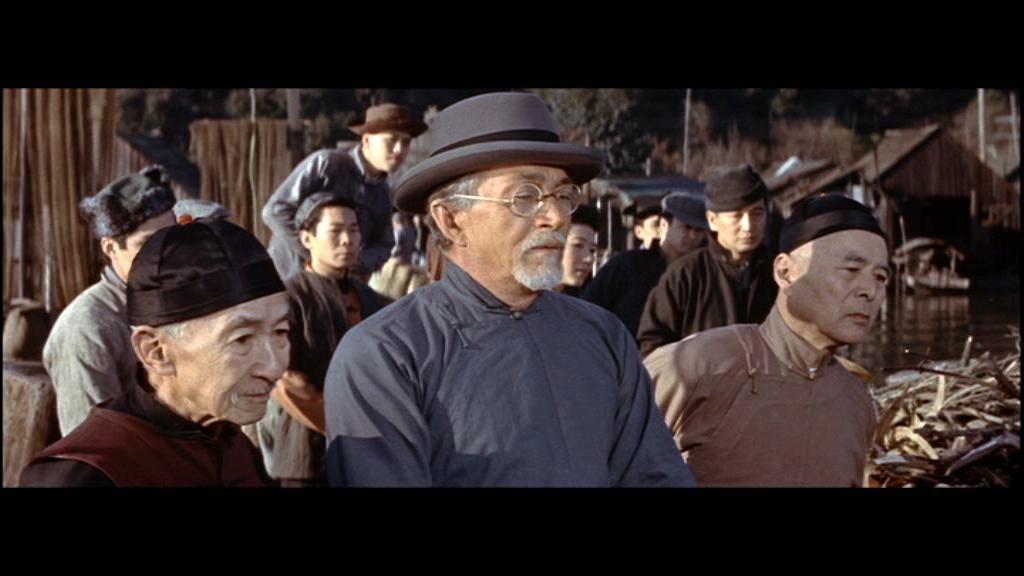
Portraying "Old Fang" the Communist Family patriarch was actor Barry Kroeger (Kroger). He was was known for playing really bad, described "Slimy", characters in 1940's movie and had started out on radio as the detective, based upon "The Saint", known as "The Falcon".
Barry Kroeger as he looked without make-up
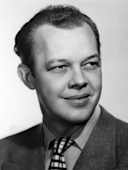
In "Blood Alley".
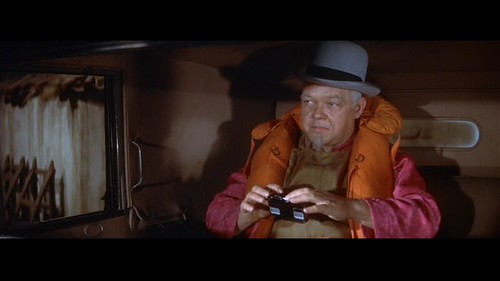
Professional wrestler turned actor Mike Mazurki portrayed "Big Han". Who becomes "Captain Wilder's First Mate".
Mazurki appeared in many classic films such as 1944's "Murder My Sweet", 1945's "Dick Tracy" as "Split Face" and Cecil B. DeMille's "Unconquered" in 1947 and DeMille's 1949 "Samson and Delilah" among his 100 motion pictures.

There were of course other actors in the picture, but I have to wonder how Spencer Tracy, Barbara Stanwyck and the other "A" Lists felt having turned down roles in "The High and the Mighty"?
I've mentioned that haunting theme song from the film by Dimitri Tiomkin that had lyrics by Ned Washington. before. Talk about bait and switch.
One of the biggest singles in 1954 was "The High and the Mighty" reaching #4 on the Billboard Charts. It was re-recorded as a single again in 1955 by several other artists with equal success. It was even used partly by Simon and Garfunkel at the fade out of their song "Punky's Dilemma".
The bait and switch by Warner Brothers was that the theme song with the lyrics only appeared in one print of "The High and the Mighty" and not the General Audience release. This was to get the song qualified for an Oscar nomination. Which Warner Brothers used later to promote the movie to potential audiences. I remember waiting to hear it on the DVD I purchased a couple of years back, but of course it wasn't there. It isn't, as of this posting, even as an extra on the Blu-Ray restoration release.
After all that the theme song lost, anyway, to "Three Coins in the Fountain" from the popular love story, that same year, which was sung over the opening credits by Frank Sinatra.
Back to Wayne's character of "Dan Roman". In the version presented for Academy Award consideration by Warner Brothers. Robert Stack's "Captain Sullivan" asks "Whistling Dan Roman" to:
Whistle me a tune Dan. I like music when I workThe tune whistled in that print was the Tiomkin "The High and Mighty " theme. However, in the General release print the song whistled by "Dan Roman" is a recognized refrain from "I'm a Ramblin' Wreck from Georgia Tech" instead. In 1952 Georgia Tech had won six straight titles under Footbal Coach Bobby Dodd and most adults knew the tune and associated it to success. A hint the plane was going to make it to San Francisco.
The following photo is of Douglas Fowley who played "Alsop" the ticket agent for the airline in Honolulu. Character actor Fowley had been in pictures since 1933 and was a familiar face to many. Three of his 336 appearances included 1949's "Mighty Joe Young", the same years classic WW2 movie "Battleground" and 1952's "Singing in the Rain". He became a regular on television's "The Life and Legend of Wyatt Earp" as "Doc Holliday" in 1961. While Doe Avedon only had 12 roles to her credit and only one motion picture besides "The High and the Mighty".
BLOOD ALLEY (1955)
One of nine year old Lloyd's favorite John Wayne pictures was "Blood Alley" released on October 1, 1955. I saw it at the Dome Theater, at the Ocean Park, CA Pier.
Hey Baby?The motion picture was based upon one of the adult themed novels, of the same title, by mainly Children's author, Albert Sidney Fleischman, William Wellman and John Wayne hired the author to write the screenplay. Fleischman would work on other Wellman films and write the screenplay for Sam Peckinpah's first feature film as director "The Deadly Companions" based on another "Sid" Fleischman novel "Yellowleg".
"Blood Alley" is strongly anti-Chinese Communist reflecting the attitudes of Americans two years after the Korean War had ended. A Merchant China skipper "Tom Wilder", John Wayne, and his crew were captured by the mainland Chinese Communists and he's been in prison for two years at the opening of the picture. To keep himself from going crazy "Captain Wilder's" has created an invisible girl "Baby" that he talks too. This has convinced his guards that he is crazy.

A small village pays the guards to look the other way and executes a rescue of Wayne's "Captain Tom Wilder" from the prison. Their plan is for "Wilder" to take the entire village, men, women, children, all the live stock, their dead ancestors. a large Communist family, they fear would be killed if left in the village after their escape, down a large river through the area known as "Blood Alley" to freedom in British held Hong Kong. The problem for "Captain Wilder" is they want to use a flat bottom ferry boat.


An added problem is an American doctor's daughter "Cathy Grainger", Lauren Bacall, whose father has been taken to operate on a Chinese General. The doctor is known to be an alcoholic and this worries the village elders. There fears will come true as the General dies while be operated upon and the father is stoned to death.
The motion picture is also a reflection of John Wayne's politics, but author Fleischman and director "Wild Bill" Wellman don't let that get in the way of this terrific action yarn. Which is still very exciting.
"Blood Alley" like most Hollywood pictures of the time never used oriental actors in leading roles. Wellman and Wayne made some interesting choices for four of the main Chinese roles.. Back as the Village Elder "Mr. Tso". Who is behind the entire plot to take his village to safety was Paul Fix. Center in the following photograph. It is rumored, but never supported that Fix also rewrote most of the sceenplay prior to the start of filming.

Portraying "Old Fang" the Communist Family patriarch was actor Barry Kroeger (Kroger). He was was known for playing really bad, described "Slimy", characters in 1940's movie and had started out on radio as the detective, based upon "The Saint", known as "The Falcon".
Barry Kroeger as he looked without make-up
In "Blood Alley".

Professional wrestler turned actor Mike Mazurki portrayed "Big Han". Who becomes "Captain Wilder's First Mate".
Mazurki appeared in many classic films such as 1944's "Murder My Sweet", 1945's "Dick Tracy" as "Split Face" and Cecil B. DeMille's "Unconquered" in 1947 and DeMille's 1949 "Samson and Delilah" among his 100 motion pictures.
Portraying "Big Han's" wife "Wei Ling" was Swedish actress Anita Ekberg. The one time "Miss Sweden" would be remembered more for Italian director Federico Fellini's 1960 "La Dolce Vita", Then any other performance.
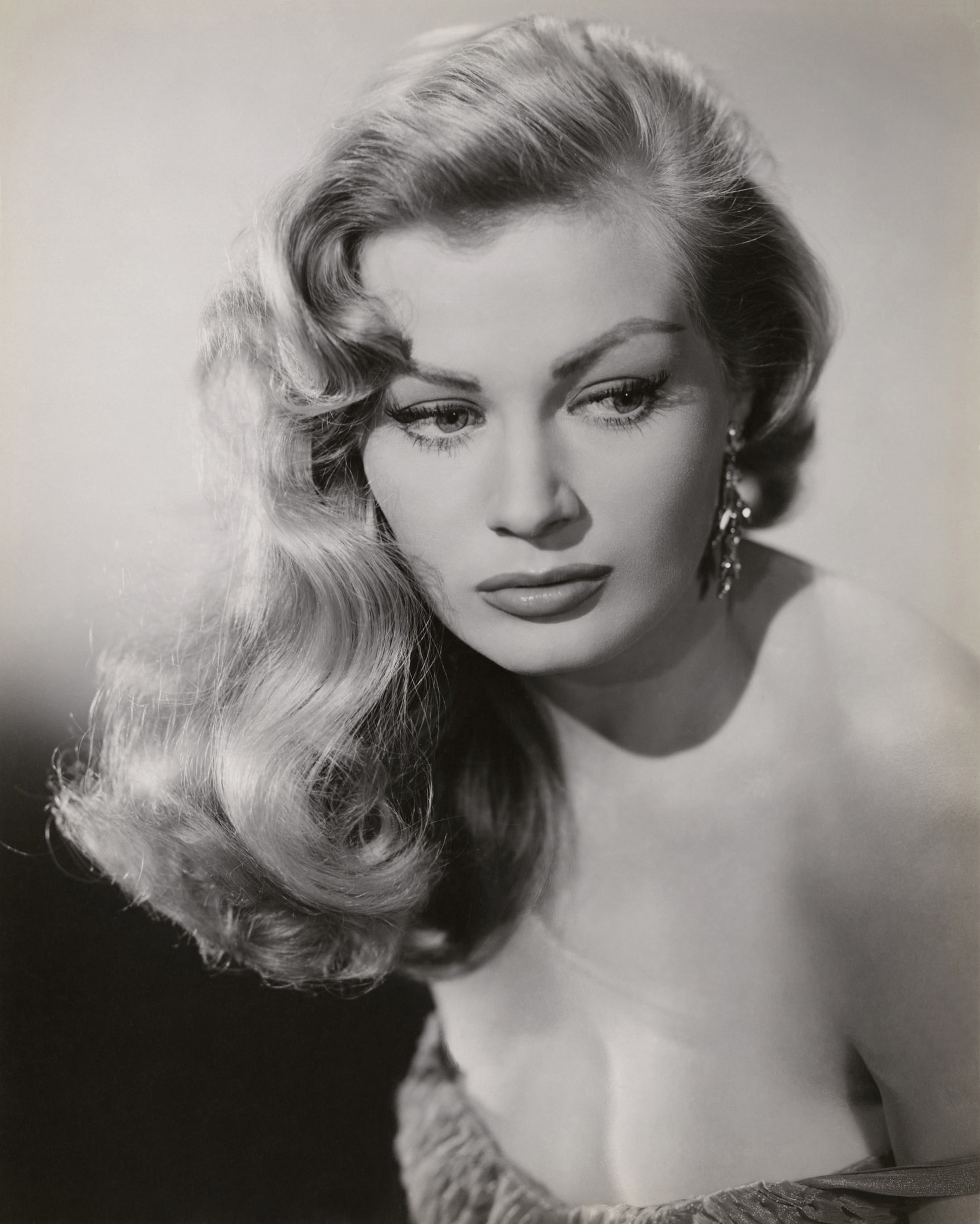
Below Ekberg in "Blood Alley".

Two of the Chinese leading roles in this picture were actually portrayed by oriental actors Actress Joy Kim was back as "Susu", "Cathy Grainger's match making housekeeper". Seen below as "Captain Wilder's" barber attempting to find out his material status.

The wise cracking role of "Tack, the Chief Engineer on the Ferry Boat" was portrayed by Japanese/American actor Henry Nakamura. Nakamura was known for the excellent WW2 motion picture about the Japanese American 442nd Regimental Combat Team "Go For Broke" starring Van Johnson and the western "Westward the Women" starring Robert Taylor.
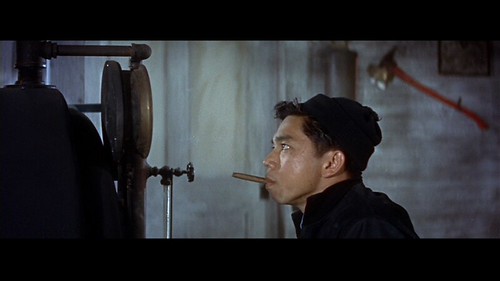
As with "The High and the Mighty" John Wayne wasn't supposed to be in "Blood Alley". Initially the role of "Captain Tom WIlder" had been cast with Robert Mitchum, but the actor was known to have a fiery temper and it went off at Wayne, Wellman and Robert Fellows. Robert Mitchum was fired before the filming began. The role was next offered to Gregory Peck, but he turned it down and Lauren Bacall's husband Humphrey Bogart was offered "Wilder". Bogart asked for too high a salary and it was not negotiable. The end result was great chemistry between Wayne and Bacall in a very memorable fan favorite.
The role of "Tom Wilder" reminded some fans of "Jack Stuart" in Cecil B. DeMille's 1942 "Reap the Wild Wind" and "Captain Ralls" in 1949's "Wreck of the Red Witch". A strong man of the sea, but as with the first two films I've mentioned against John Wayne's "Cowboy Image". Which the critics and fan base preferred him to be. There were four specific films, three in the 1950's and one in 1964, that Wayne choose in an attempt to break away from that image. A link to the stories of these pictures can be found also at the end of this article.


The Warner Brother's publicity departments best promotion for "Blood Alley" involved the extremely popular "I Love Lucy" television program. In the first of two episodes that aired nine days after the movie first opened on October 10, 1955. Lucy and her friend Ethel steal John Wayne's footprints from in front of Grauman's Chinese Theater. This leads to the two meeting John Wayne on the set of "Blood Alley" and another scene where a studio employee holds up to the actor a poster for the picture. The second episode, also with Wayne, completes the story of the stolen footprints.
The following links are for my readers interested in a little more about John Wayne.
This link will take my reader to my blog article on "The Big Trail" the first movie with the name John Wayne on the marquee:
http://www.bewaretheblog.com/2015/10/john-wayne-william-fox-grandeur-and-big.html
I mentioned those four roles Wayne took to change his Cowboy Image. This link will take you to the article:
http://www.bewaretheblog.com/2015/04/john-wayne-four-gutsy-role-choices.html
The actor's politics are very interesting. The following link takes my reader to an article comparing his views to Jane Fonda over Vietnam.
http://www.bewaretheblog.com/2016/11/jane-fonda-and-john-wayne-two-sides-of.html
"The Alamo" was Wayne's pet project and this link takes my reader to that story:
http://www.bewaretheblog.com/2016/12/john-waynes-alamo-fan-reflects-on.html
Although not specifically about the actor. This article looks at the three motion picture versions of "Stagecoach":
http://www.bewaretheblog.com/2016/09/a-comparison-of-john-fords-1939.html

Below Ekberg in "Blood Alley".

Two of the Chinese leading roles in this picture were actually portrayed by oriental actors Actress Joy Kim was back as "Susu", "Cathy Grainger's match making housekeeper". Seen below as "Captain Wilder's" barber attempting to find out his material status.

The wise cracking role of "Tack, the Chief Engineer on the Ferry Boat" was portrayed by Japanese/American actor Henry Nakamura. Nakamura was known for the excellent WW2 motion picture about the Japanese American 442nd Regimental Combat Team "Go For Broke" starring Van Johnson and the western "Westward the Women" starring Robert Taylor.

As with "The High and the Mighty" John Wayne wasn't supposed to be in "Blood Alley". Initially the role of "Captain Tom WIlder" had been cast with Robert Mitchum, but the actor was known to have a fiery temper and it went off at Wayne, Wellman and Robert Fellows. Robert Mitchum was fired before the filming began. The role was next offered to Gregory Peck, but he turned it down and Lauren Bacall's husband Humphrey Bogart was offered "Wilder". Bogart asked for too high a salary and it was not negotiable. The end result was great chemistry between Wayne and Bacall in a very memorable fan favorite.
The role of "Tom Wilder" reminded some fans of "Jack Stuart" in Cecil B. DeMille's 1942 "Reap the Wild Wind" and "Captain Ralls" in 1949's "Wreck of the Red Witch". A strong man of the sea, but as with the first two films I've mentioned against John Wayne's "Cowboy Image". Which the critics and fan base preferred him to be. There were four specific films, three in the 1950's and one in 1964, that Wayne choose in an attempt to break away from that image. A link to the stories of these pictures can be found also at the end of this article.


The Warner Brother's publicity departments best promotion for "Blood Alley" involved the extremely popular "I Love Lucy" television program. In the first of two episodes that aired nine days after the movie first opened on October 10, 1955. Lucy and her friend Ethel steal John Wayne's footprints from in front of Grauman's Chinese Theater. This leads to the two meeting John Wayne on the set of "Blood Alley" and another scene where a studio employee holds up to the actor a poster for the picture. The second episode, also with Wayne, completes the story of the stolen footprints.
The following links are for my readers interested in a little more about John Wayne.
This link will take my reader to my blog article on "The Big Trail" the first movie with the name John Wayne on the marquee:
http://www.bewaretheblog.com/2015/10/john-wayne-william-fox-grandeur-and-big.html
I mentioned those four roles Wayne took to change his Cowboy Image. This link will take you to the article:
http://www.bewaretheblog.com/2015/04/john-wayne-four-gutsy-role-choices.html
The actor's politics are very interesting. The following link takes my reader to an article comparing his views to Jane Fonda over Vietnam.
http://www.bewaretheblog.com/2016/11/jane-fonda-and-john-wayne-two-sides-of.html
"The Alamo" was Wayne's pet project and this link takes my reader to that story:
http://www.bewaretheblog.com/2016/12/john-waynes-alamo-fan-reflects-on.html
Although not specifically about the actor. This article looks at the three motion picture versions of "Stagecoach":
http://www.bewaretheblog.com/2016/09/a-comparison-of-john-fords-1939.html

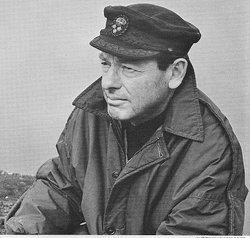














.jpg)







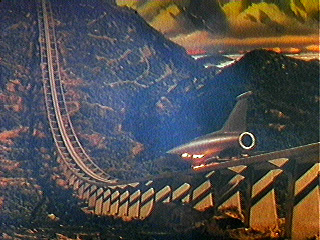


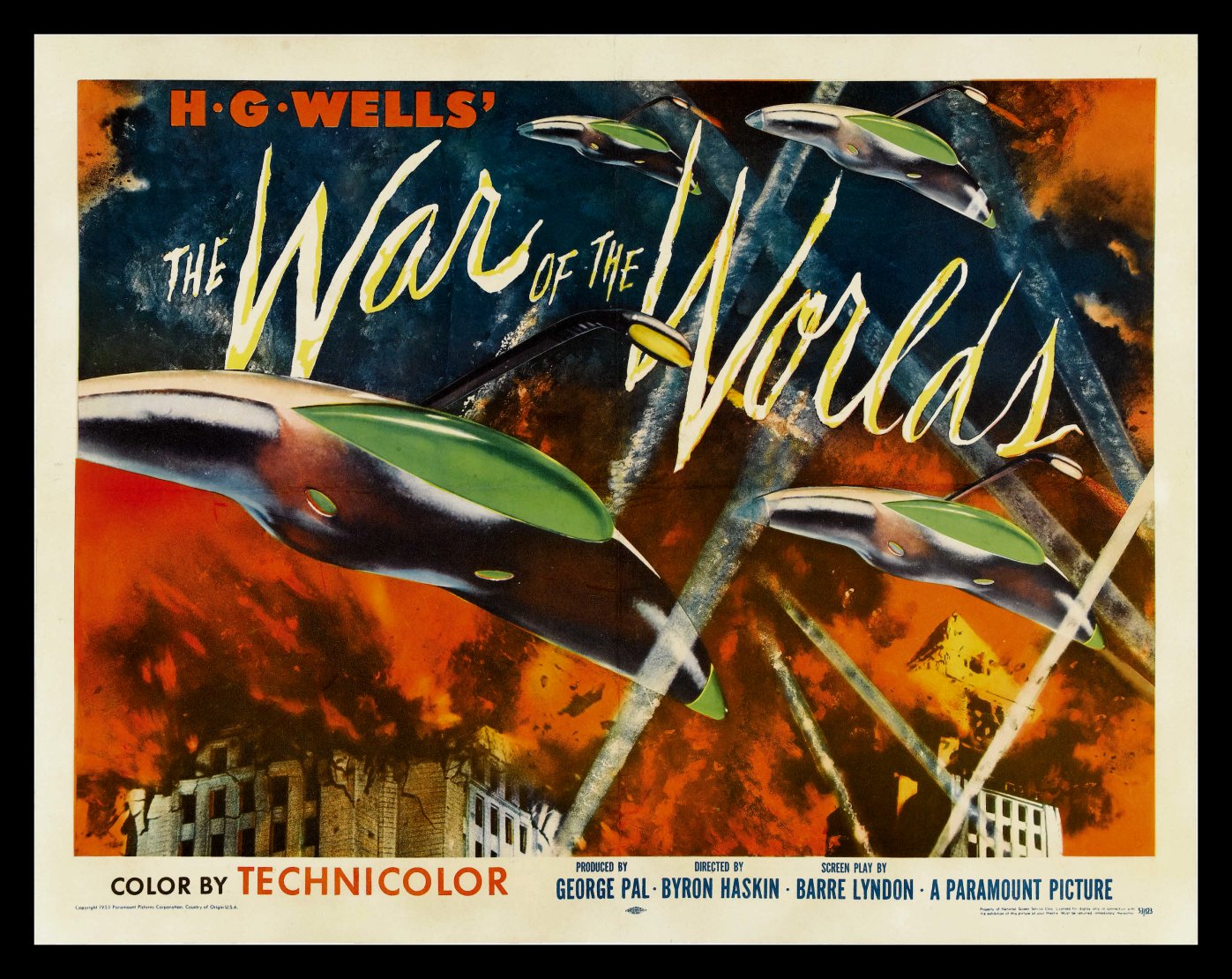

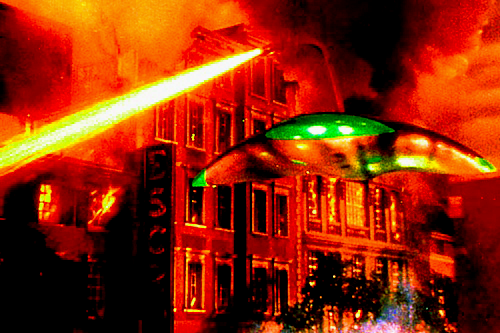



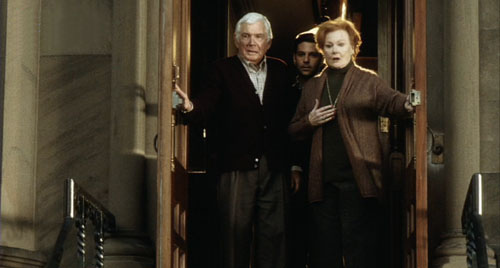




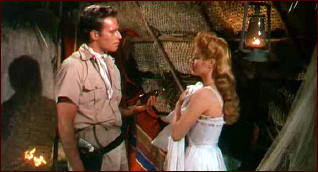

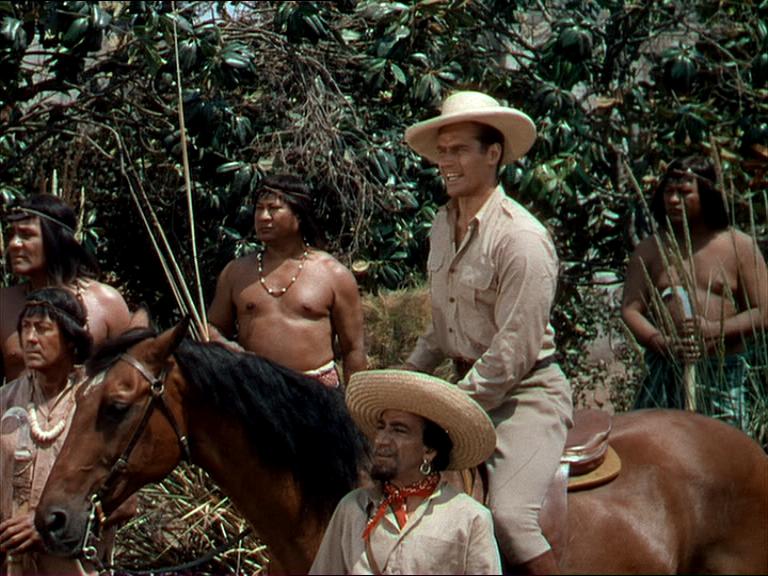

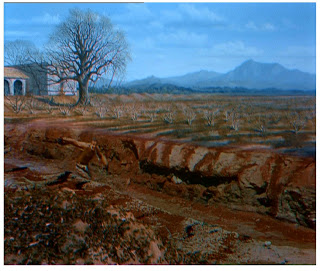
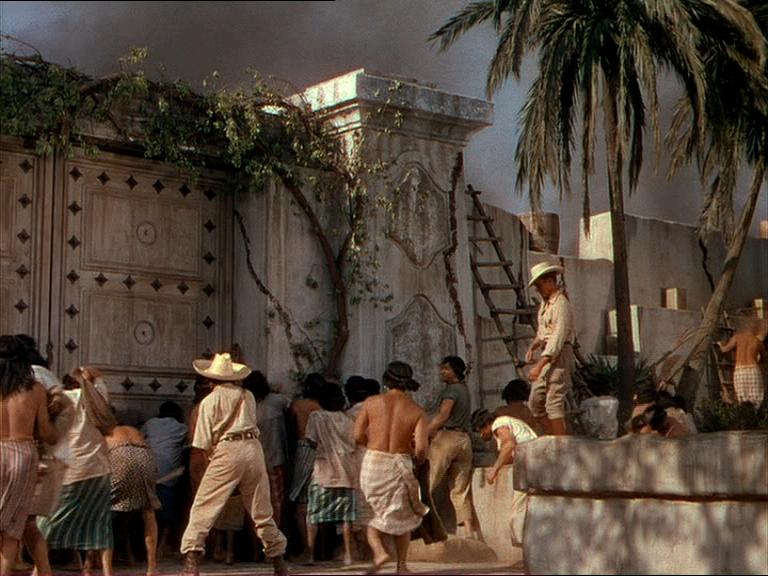




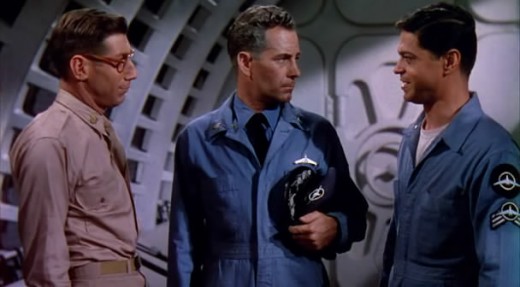




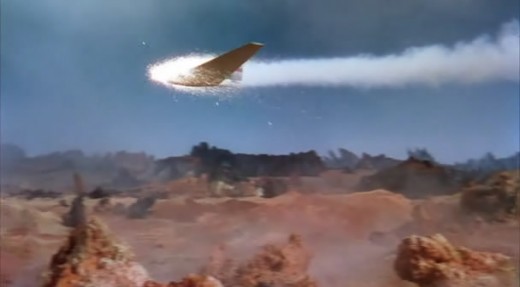



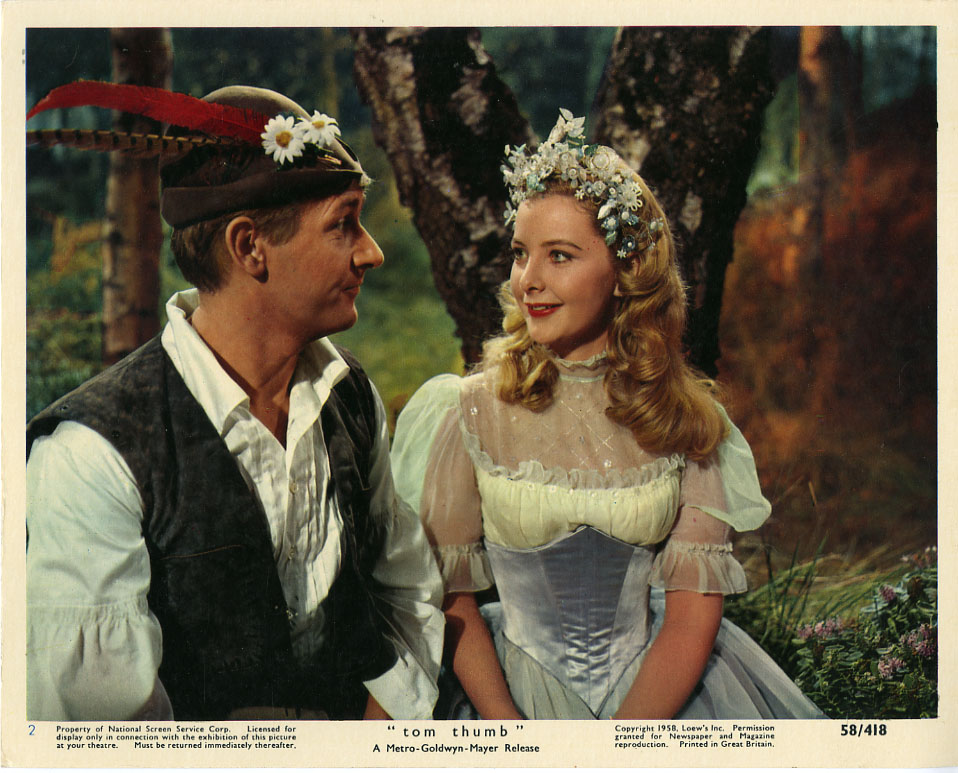
+3.jpg)

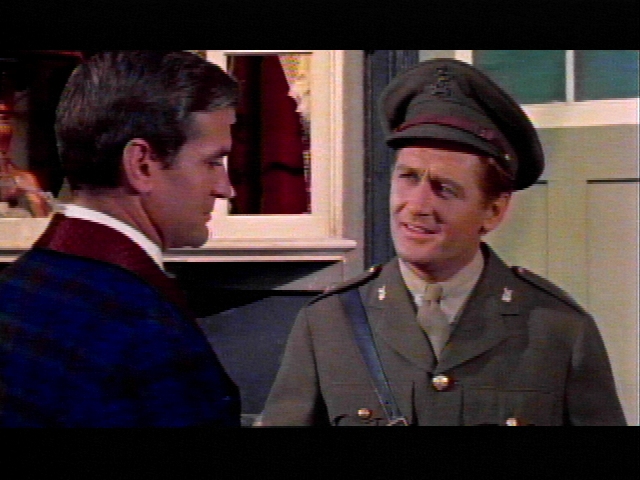


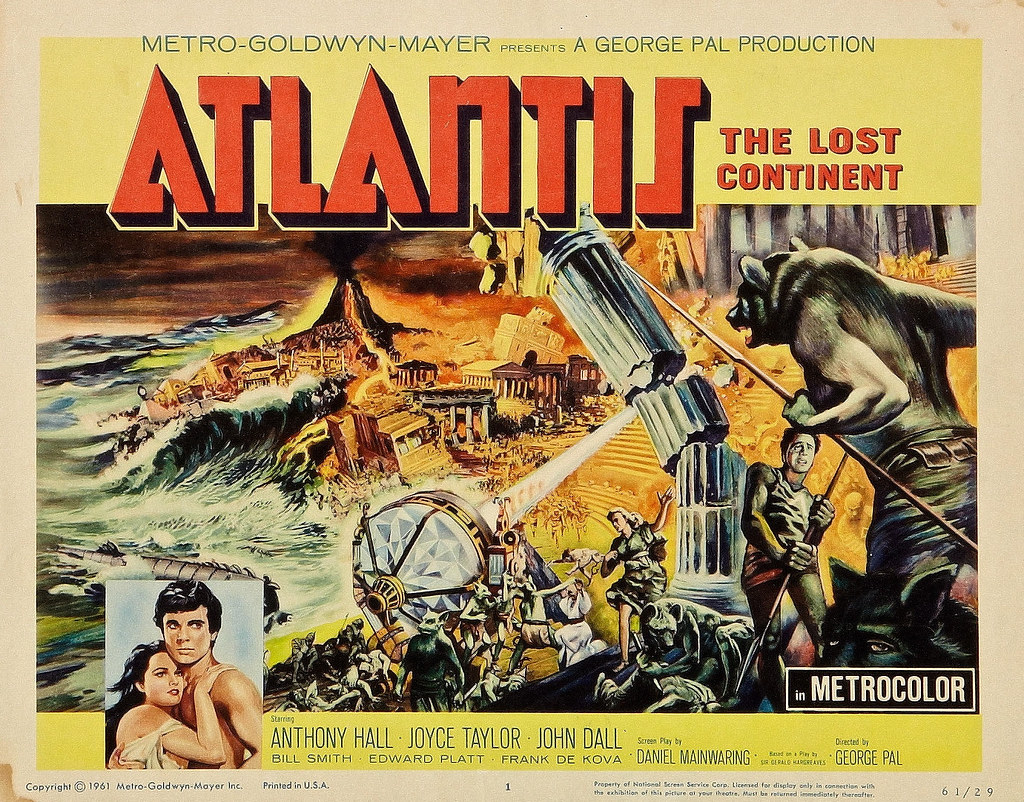


%2B-%2BLana%2BTurner.jpg)

